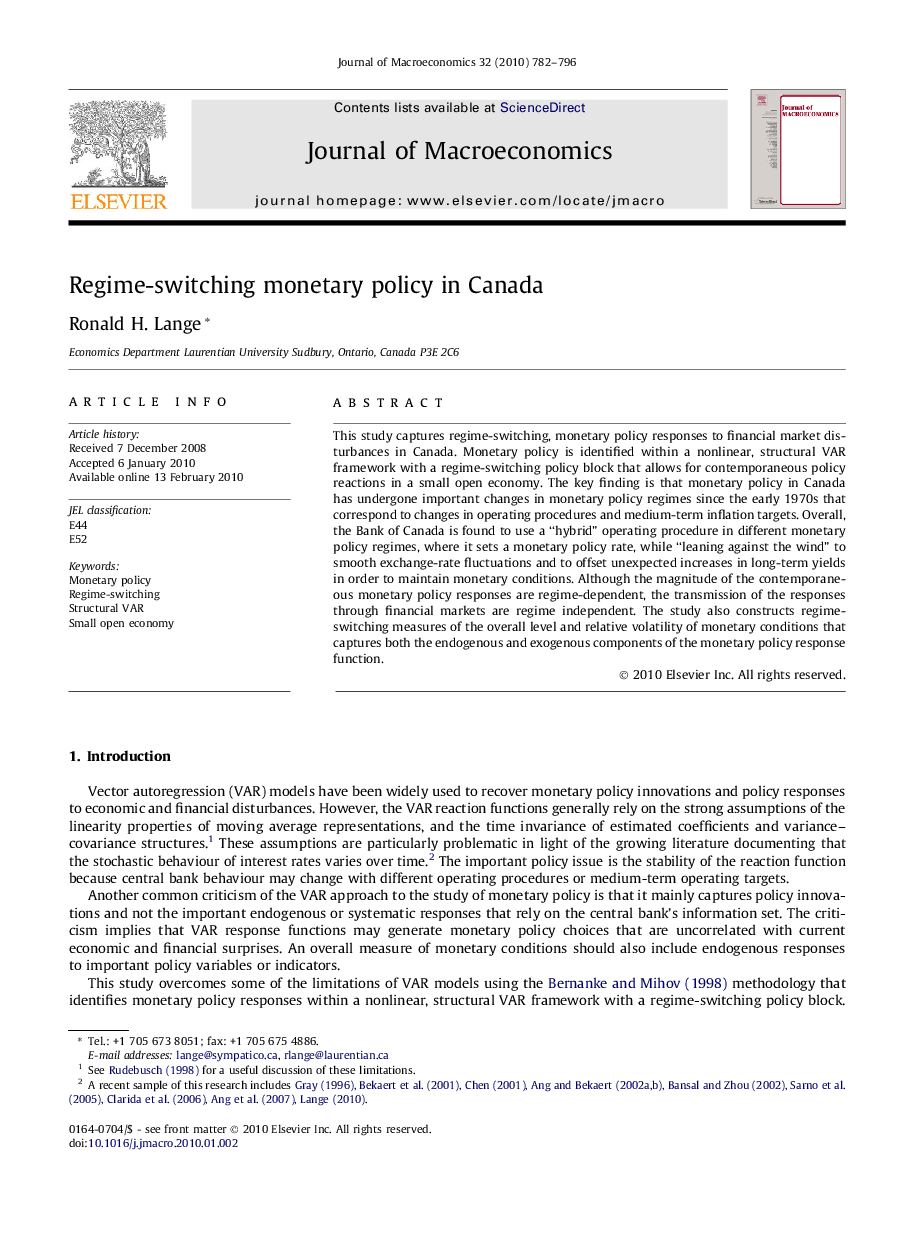| Article ID | Journal | Published Year | Pages | File Type |
|---|---|---|---|---|
| 965926 | Journal of Macroeconomics | 2010 | 15 Pages |
Abstract
This study captures regime-switching, monetary policy responses to financial market disturbances in Canada. Monetary policy is identified within a nonlinear, structural VAR framework with a regime-switching policy block that allows for contemporaneous policy reactions in a small open economy. The key finding is that monetary policy in Canada has undergone important changes in monetary policy regimes since the early 1970s that correspond to changes in operating procedures and medium-term inflation targets. Overall, the Bank of Canada is found to use a “hybrid” operating procedure in different monetary policy regimes, where it sets a monetary policy rate, while “leaning against the wind” to smooth exchange-rate fluctuations and to offset unexpected increases in long-term yields in order to maintain monetary conditions. Although the magnitude of the contemporaneous monetary policy responses are regime-dependent, the transmission of the responses through financial markets are regime independent. The study also constructs regime-switching measures of the overall level and relative volatility of monetary conditions that captures both the endogenous and exogenous components of the monetary policy response function.
Related Topics
Social Sciences and Humanities
Economics, Econometrics and Finance
Economics and Econometrics
Authors
Ronald H. Lange,
